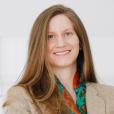

Showing 701 - 720 of 774 results


Role at ANSTO
Research confirms that ancient Tasmania was not a ‘wilderness’ but an Indigenous cultural landscape
Recent studies led by the University of Melbourne have revealed that the Palawa people’s ancient land stewardship techniques have profoundly shaped the landscape of western Lutruwita, within the traditional territories located in Tasmania.
Dire statistics for seabirds in latest plastics research

CORIS360® case studies
After your experiment
Following your experiment at the Australian Synchrotron there are certain tasks that users can complete including a user feedback survey and claiming reimbursement for travel expenses.

Chronic kidney disease of unknown origin
In 2017, ANSTO's CEO signed a Memorandum of Understanding with Sri Lanka to work together to investigate the epidemiology of Chronic Kidney Disease of unknown origin (CKDu).

Role at ANSTO
Research highlights published and Swiss delegation visits

Kathleen manages the quality and document management systems, and oversees procedures for inspection, testing, and calibration of equipment and systems, to support the accelerator operations and beam lines.
Evaluating the impact of nanomaterials on health and the environment
ANSTO has put together a robust multidisciplinary approach to understanding the impacts of nanomaterials, investigating a common food additive, E171 titanium dioxide, used primarily as a colouring agent in everyday foods.
Tuning thermomechanical properties
Wombat used in study that showed tuneable thermal expansion by controlled gas sorption.
Potential true theranostic agent for cancer produced
Scandium 47, a therapeutic radioisotope and potential theranostic, has been produced for the first time at ANSTO. Theranostics are used to both diagnose and treat disease.

Role at ANSTO:
Volunteer Week: Part one
ITRAX scanning on cores from Macquarie Island
Research reveals that strong westerly winds weaken the Southern Ocean’s ability to store carbon and thereby contribute to faster accumulation of carbon dioxide in the atmosphere
European neutron scattering research community faces challenges

Role at ANSTO

Access to information
The physics of producing nanoparticles
Measurement research undertaken to ensure safe, well-engineered nanoparticles